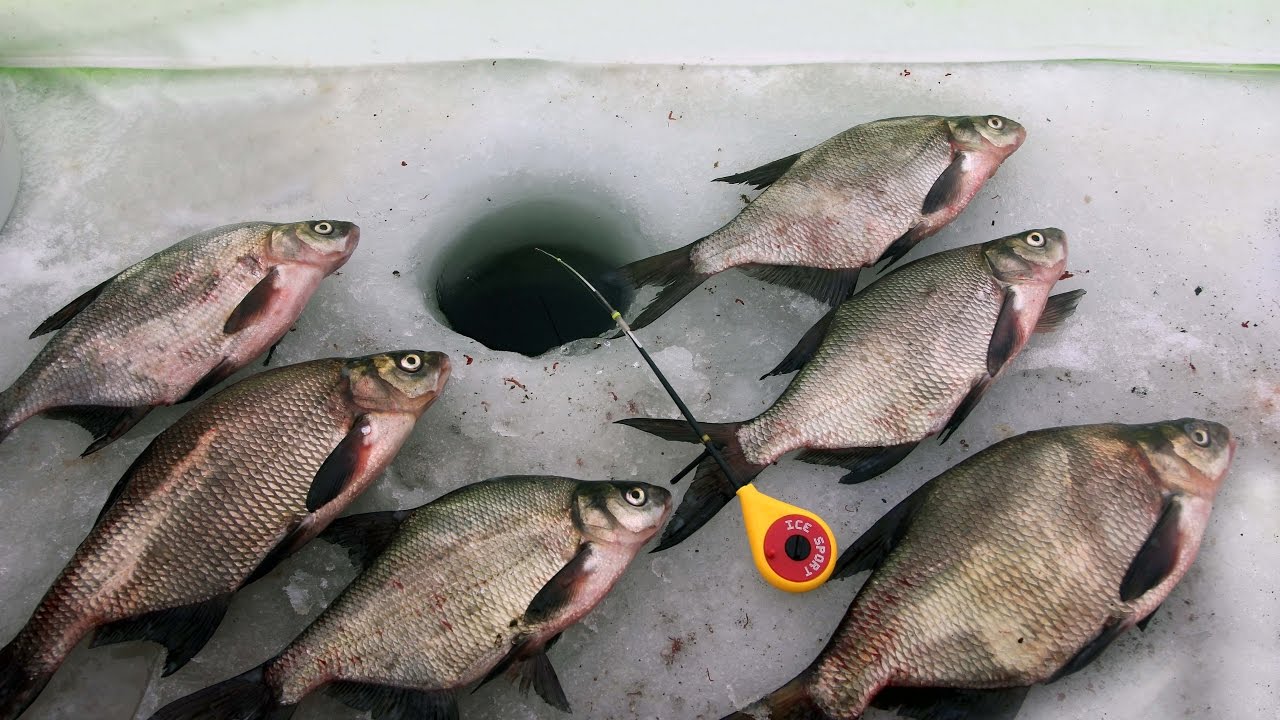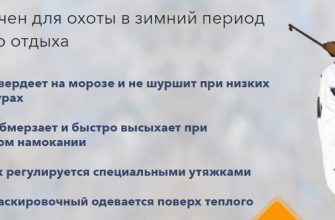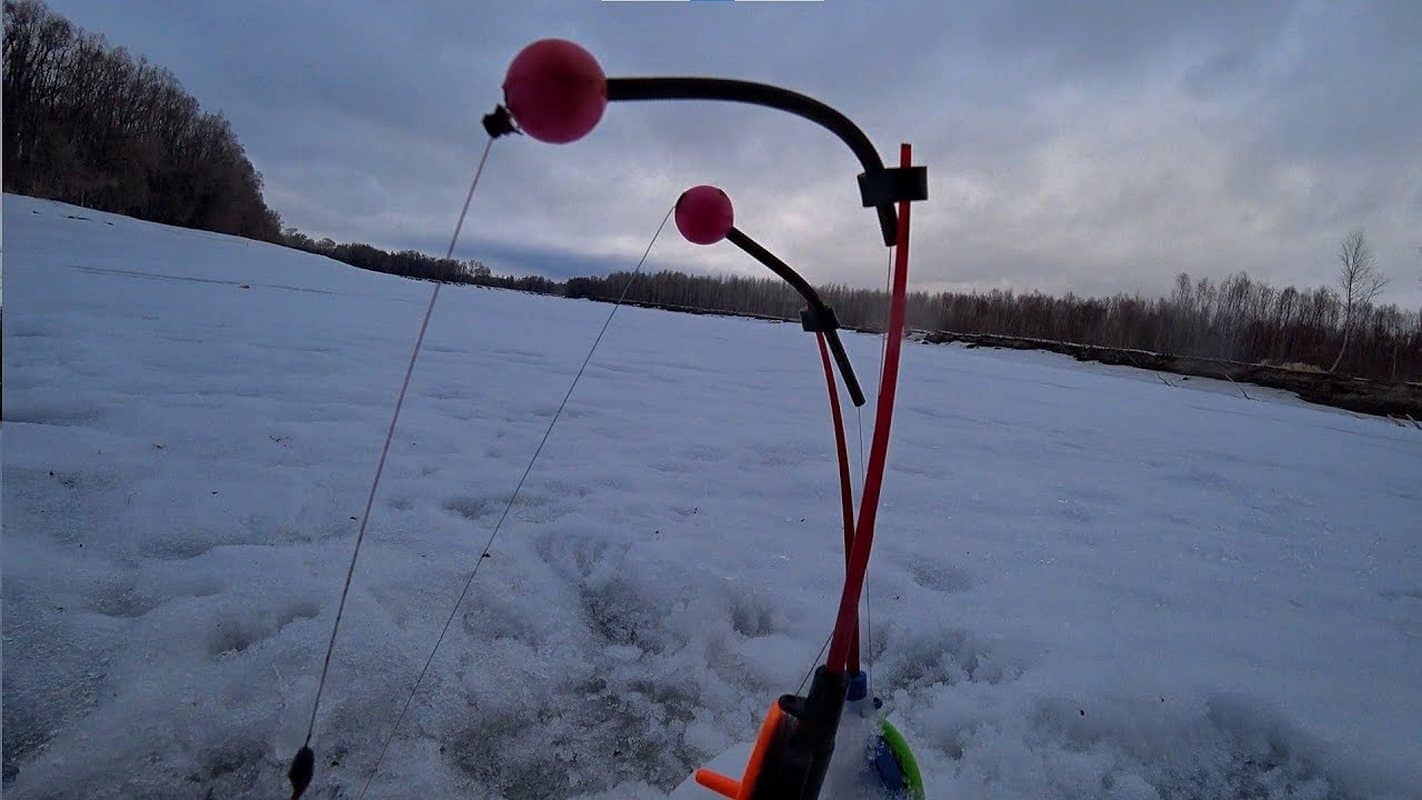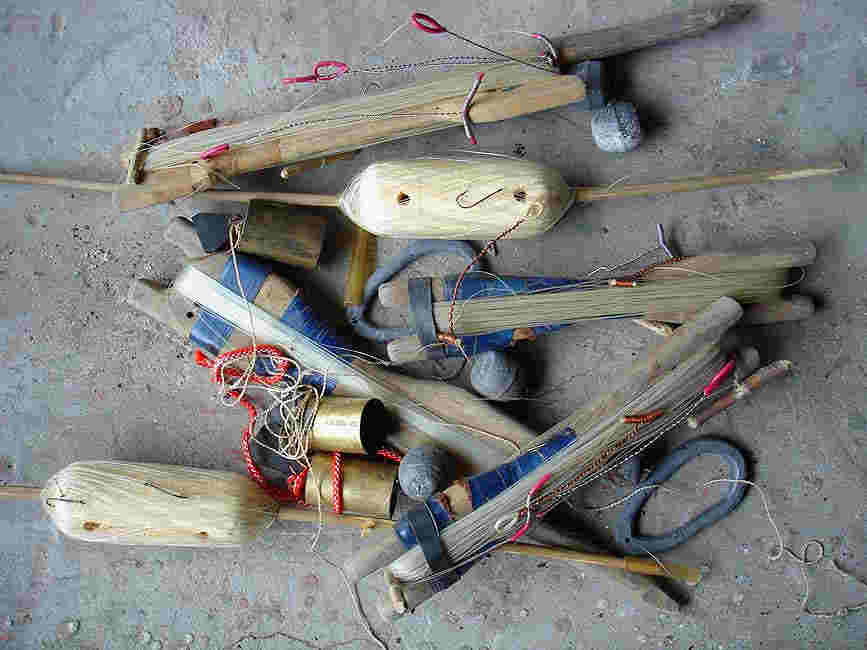Catching bream in winter is not only interesting, but also effective. You can catch both a bastard and quite trophy specimens. To successfully catch bream from the ice, you need to know the basic habits of the fish, where the promising points are, what gear to work with in different conditions, as well as what bait and groundbait to use.
- Where to look for bream in winter on the river and reservoir (stagnant reservoir)
- Stays of winter bream in medium and small pits along the current
- Where to look for bream on lakes, reservoirs and other stagnant bodies of water
- Features of catching bream in different periods of winter
- Suitable weather conditions for bream fishing: pressure, wind and stability
- Fishing for bream in winter: how to make promising tackle, their rig with a photo
- Float tackle on a shiny handsome man
- Jigging tackle for bream
- Tackle harvester / descender for catching bream in winter on the current with a feeder – photo
- Helicopter rig – another rig for the flow: photo
- How to catch bream and breeder in winter with a garland of devils
- Ride – winter tackle for catching bream in a strong current
- Catching on the ring
- What does winter bream bite on, what does it love
- How and what to feed bream: recipes
- A few more features of fishing for winter bream
- Winter fishing for bream in a tent at night
- Tips from experienced anglers
- Поделиться ссылкой:
Where to look for bream in winter on the river and reservoir (stagnant reservoir)
For guaranteed success in ice fishing, it is necessary to accurately identify the bream sites. Basically, difficulties arise for novice anglers on an unfamiliar reservoir. Search for work points faster and more efficiently with the echo sounder. This modern gadget is able to measure the depth in a few seconds, examine the bottom of the reservoir, identify the presence of underwater objects and obstacles. The device will be especially useful when fishing for bream in winter. In addition, the echo sounder allows you to see how the fish responds to a particular bait. Identifying bream using an echo sounder: https://youtu.be/QiSTpnCpXho If there is no echo sounder, you need to search for bream on ice depending on the type of reservoir.
Stays of winter bream in medium and small pits along the current
Winter river bream stands near the pits. In the cold season, flocks of scoundrels and bream keep near the suvod, on the border of calm water and a strong current. The main food for winter bream is the mollusk, zebra mussel. The lower sections of the river bed dumps and elevations in depressions may be promising places. Watering should not be ignored either. If fishing is planned on a large reservoir, then it is worth working on rocky ridges, where the favorite delicacy of bream often lives. Fish in search of food can explore both the bends of the channel and steep cliffs near calm reaches / rifts. If there is enough feed, then the bream moves both downstream and upstream.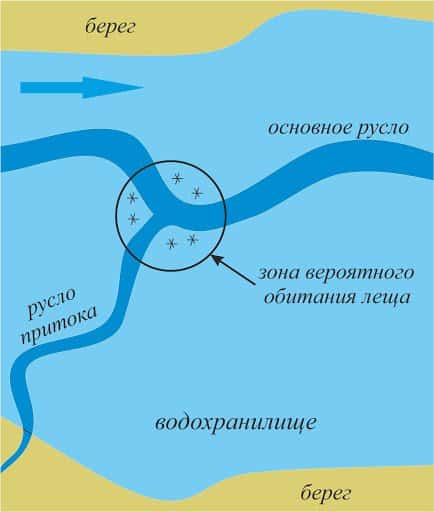
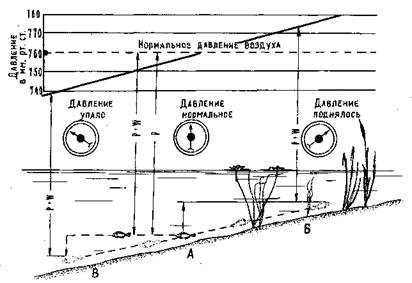
Where to look for bream on lakes, reservoirs and other stagnant bodies of water
In a closed, unfamiliar reservoir, the deepest areas are often prey. For the bream, it is more habitual to be in constancy, it is not typical for it to leave specific places. To hunt large individuals, they make holes at a distance of 8-9 meters from the workers and give them a rest. Winter bream can be easily scared away if you do not take precautions, make noise on the ice, and fuss too much. If fishing takes place on a lake, then the deepest places where there are exits to the shallows will be effective. The priority will be the drops in the bottom surface, but even tables may be unpromising.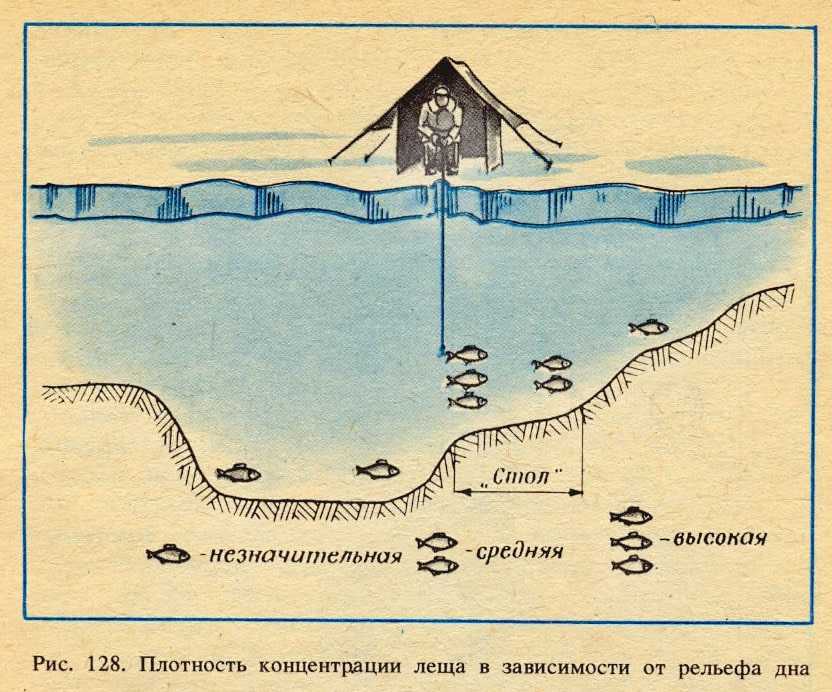
Features of catching bream in different periods of winter
On the first ice, you can count on the catch if you develop a working square after familiarizing yourself with the bottom surface. It is better to look for bream at the beginning of winter on the sidelines, in dumps. It is promising to make holes in a checkerboard pattern at a distance of 10-15 m from each other. But it is not worth considering a place with a muddy bottom for fishing. Bream prefers to live in areas with a sandy, clay bottom. In December, when the activity of the fish is still at a high level, it is better to use catching jigs for attracting. In the middle of winter, even this period, anglers call the wilderness, there is a low concentration of oxygen in the water. Underwater inhabitants move to a depth of 7-10 m, at this moment almost all underwater inhabitants leave the shallow water, with the exception of frank small fry. It is especially promising to look for fish in areas with weak currents.Deep-water channels should depart from the depressions along the channel. When a thaw sets in, the working depth shifts by 2-3 meters. At very low temperatures, the fish stays in the pits.
Advice! The study of the reservoir in open water simplifies and speeds up the process of finding promising fishing points. In autumn it is easy to measure the depth, study the bottom topography and mark bream paths.
Fishing for large bream in winter: https://youtu.be/IczBshXiekA
Suitable weather conditions for bream fishing: pressure, wind and stability
Bream exhibits its activity in stable weather. It fully feeds, reacts well to baits when there are no sudden changes in temperature, atmospheric pressure, and the wind is directed in one direction. Fish feel normal at atmospheric pressure in the range of 735-745 mm. It is very important for successful winter fishing that the weather does not change for at least two to three days. Especially good results can be expected when large snow falls. The catch on such days can consist of both bream and roach.
Fishing for bream in winter: how to make promising tackle, their rig with a photo
There are many different methods of fishing for bream on ice. But in order to always stay with the catch, you need to know how to collect the tackle and what tactics to use.
Float tackle on a shiny handsome man
For winter bream, when it is cautious and shy, it is good to work with a float. The main thing is to choose the right float equipment. This fishing method is especially popular among anglers. It is appreciated for its prowess even in all weather conditions. When assembling the rig, you need to maintain a balance between the sinker and the float. Ideally, the weight of the load and the hook together is only slightly different from the carrying capacity of the float. When using float tackle, the bait should be practically at the very bottom, the float should sink slowly.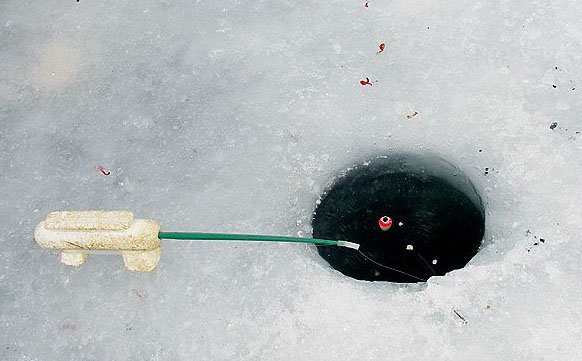
- fishing rod (balalaika, filly) with an ordinary whip and cork handle;
- open coil;
- mono with a diameter of 0.14-0.16 mm (better dark color for better visualization on ice);
- hooks No. 10-12 with a long forend for a confident hooking;
- classic float with different carrying capacity depending on fishing conditions (for a depth of 7-8 meters, the optimal weight is 2-3 grams);
- 1-2 weights of pellets (depending on the strength of the current).

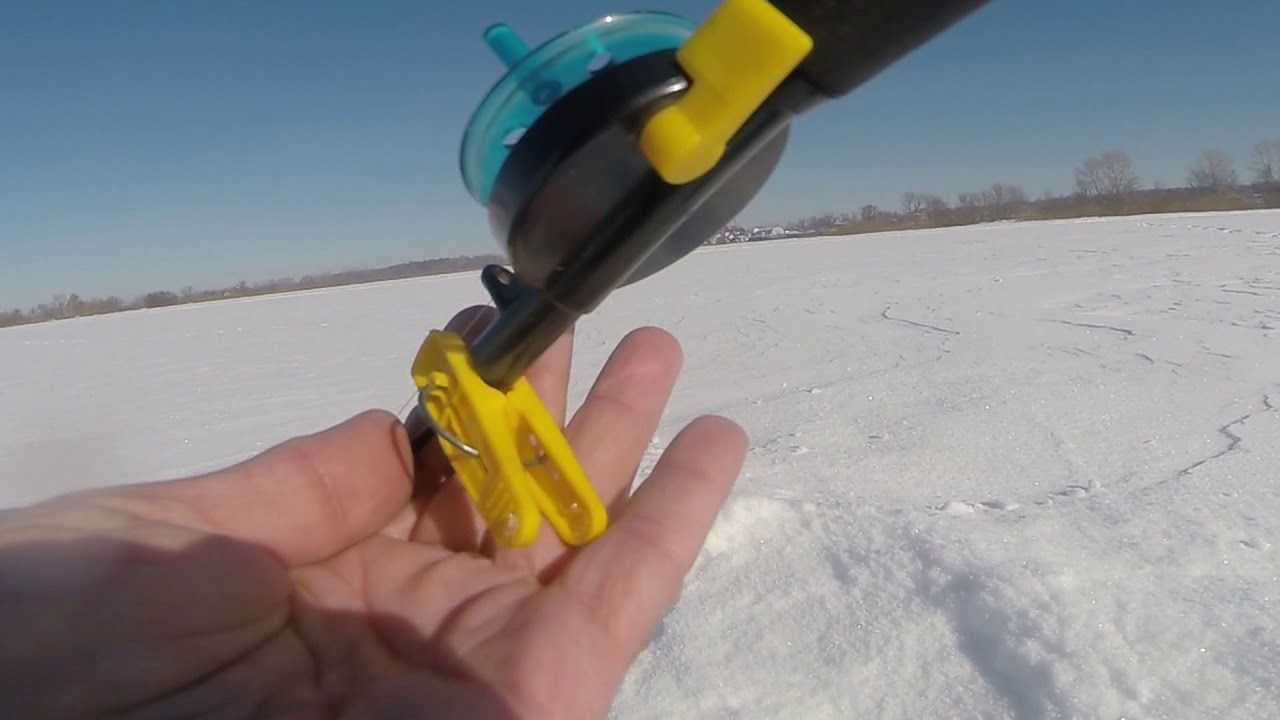
Jigging tackle for bream
Bream responds quite positively to the jig even in the middle of winter, when other baits do not work. This fishing method is easy to use and highly effective. Catching bream in this way is also within the power of beginners. The jig is well suited for day and night fishing for breeders and bream in a tent. To assemble the working gear you will need:
- Lightweight and compact fishing rod . The blank must be strong, 30-50 cm long with guides. Considering the extreme conditions of hunting, the handle should be made of cork material.
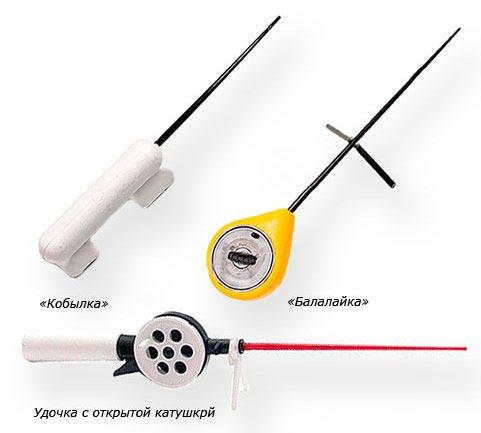
- Medium-hard nod 15-25 cm long . For its manufacture, a clock spring is suitable, which is capable of transmitting information as accurately as possible about the interest of the bream in the bait. A
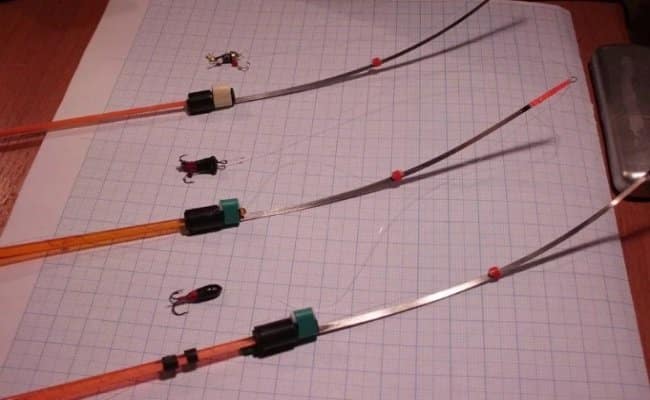
- Reliable coil model . Both open and closed types can be used.
- Monofilament line with a section of 0.1-0.17 mm up to 20 meters long. For catching large individuals, a monofilament with a breaking load of 1-1.5 kg is recommended. When using a thick vein, it is likely to scare away prey.
- Heavy tungsten jig . Given the depth of the bream in winter, the bait should be quite weighty. Otherwise, she will not be able to take specific positions. For voluminous jigs, the hook must be appropriate, it must hold up to 10 bloodworms.
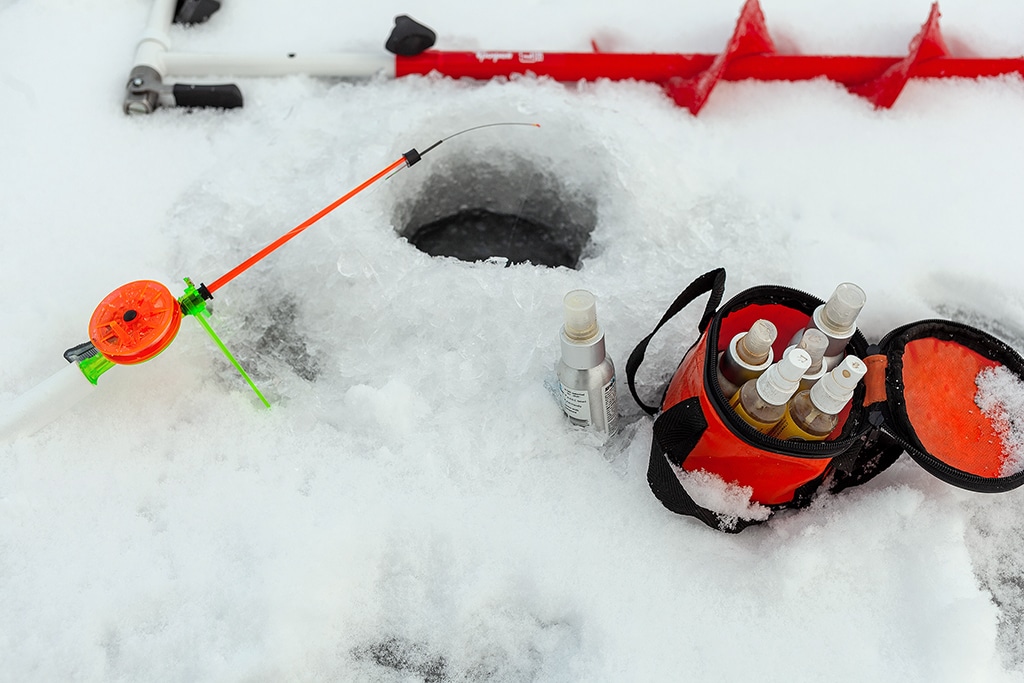
Advice! Bream in winter reacts well to jigs such as oatmeal, uralka, reverse uralka, drop-shaped. They work great when paired with live food. Such a tandem can arouse interest even among the most passive inhabitants of the reservoir.
Catching bream with a rewinder and a devil in winter: https://youtu.be/AdBQ329qu3g How to catch bream in winter with a jig: https://youtu.be/tnJLteqQfNU
Tackle harvester / descender for catching bream in winter on the current with a feeder – photo
The harvester is one of the most promising tackle for catching bream and bream in a strong current. For its manufacture, use:
- quality rod;
- reliable reel (line capacity from 30 meters);
- monofilament up to 0.3 mm thick;
- closed feeder;
- leashes with hooks;
- a couple of pellets (mounted after the first hook).
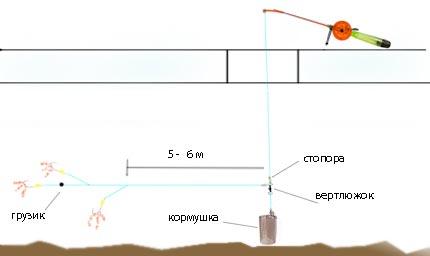
- Develop a working square by drilling holes.
- Fill the feeders with bait attractive to bream.
- Attach the bait to the hooks.
- Dip the rig into the water.
- Install the tackle on the stand.
Gradually, the bait mixture will be washed out of the trough by the current, attracting and holding the fish in a given horizon. It remains for the fisherman to control the situation in order to make the hooking in time.
Helicopter rig – another rig for the flow: photo
The rig is interesting, efficiently working in areas with a current and with a large concentration of fish. You won’t be able to buy a ready-made helicopter, you need to make it yourself. The manufacturing principle is as follows:
- Prepare the main line with a thickness of 0.25 mm.
- Set a weight on it up to 40 grams.
- Secure on both sides with a stopper.
- Place a small swivel at the end of the line.
- Attach a 1-meter lead with a diameter of 0.18 mm with 3-4 hooks.
- Install the cover / bottom from the tin container.
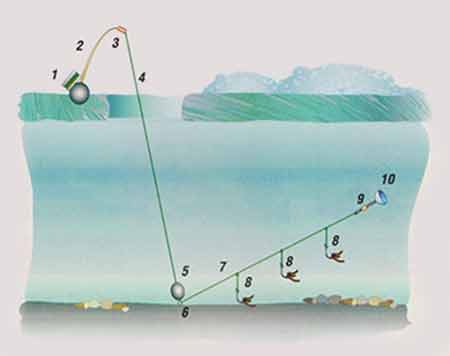
When making a helicopter, it is important to ensure that the thread passes through the center of the tin disk. Under the influence of a strong stream, the bait will look quite impressive.
How to catch bream and breeder in winter with a garland of devils
The rig is somewhat complicated to assemble, it is not easy to move from one fishing point to another with it. But at the same time, it does not lose its importance during the winter. In this case, a rod equipped with a reel and line with a diameter of up to 0.2 mm is used. Jigs will need several pieces, equipped with three hooks-devils soldered into the body. They are mounted on a fishing line, 30 cm apart from each other. When fishing in the current, one more weight is installed. The gatehouse in such conditions should bend 25-35 degrees under load.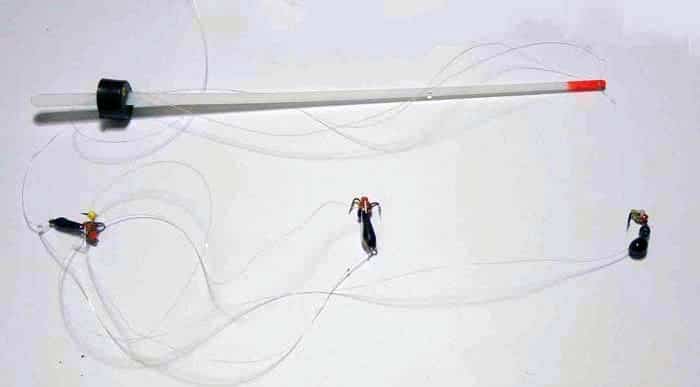
- Drill holes.
- Submerge the structure in water.
- Tap the bottom with the bottom imp to achieve an attractive slush.
- Make a stop.
- Make ascents with weak vibrations.
- Sweep at the top.
https://youtu.be/IEXG-3Eo0z4
Ride – winter tackle for catching bream in a strong current
This method is relevant for rivers with a strong stream. Compared to a garland, the roller has a round sliding sinker, and an olive is also suitable. The fishing principle is quite simple. It is necessary to carefully lower the bait to the selected distance and stop for a couple of seconds. Then pull the rig back up. Most often, bites occur during a pause or when the bait moves smoothly upstream. This method is very similar to summer float fishing with sticks. https://youtu.be/GXQrEJXd8WQ
Catching on the ring
The method is quite promising and in demand among winter fishing anglers. It is especially interesting during the course. You can assemble the structure with your own hands, observing the following sequence:
- Cast a ring 6-8 mm thick from lead, the outer diameter of which is 50-65 mm, and the inner diameter is 15-25 mm.
- Make a cut in it under a thick vein, drilling a hole with a diameter of 3-5 mm to the side of it.
- Run a line with a diameter of 0.25-0.35 mm through the hole in the wall of the ring.
- Tie a swivel with a stopper at the end of the vein.
- Attach to it a meter-long line with a thickness of 0.2-0.25 mm with a pair of hooks. The length of the leashes is 20-40 cm, the thickness is 0.15-0.18 mm.
Fishing for large bream during the winter: https://youtu.be/0QmDZf6RU7c
What does winter bream bite on, what does it love
The right bait / bait makes almost half the success of ice fishing for bream. There should be several options in the angler’s arsenal. The priority is:
- Bloodworm . It is a versatile bot that is always a win-win solution. You can find the larvae in the silt. To catch a scavenger, two bloodworms are used, and on large individuals – a bunch of 5-8 pieces.
- Mormysh . The bait works on any body of water. It can also be used boiled. It is interesting for fish due to its rich orange color, pleasant smell. Mormysh is recommended to be used as an ingredient in the groundbait mixture.
- Maggots are good for winter bream on the first ice and at the end of winter.
- Vegetable baits . Fish are attracted by semolina, dough and bread. Better to apply them over the last ice.
- Lard is a delicacy for bream, although not everyone knows about it.
Fishing for bream with bacon and other baits in winter: https://youtu.be/I9yywjqpfOk
How and what to feed bream: recipes
In winter, you shouldn’t add too much flavor to your bait mix. Otherwise, the fish, sensing something amiss, will quickly leave the fishing point. Groundbait is prepared from:
- steamed millet;
- oatmeal;
- crushed wheat grains;
- decoys;
- ground sunflower seeds;
- bran;
- fodder bloodworm;
- chopped worm;
- maggot.
For information! In winter, it is not recommended to overfeed the bream; it is better to serve the bait in doses.
When fishing in the current, the consistency of the bait composition should be quite dense, viscous, and in calm water – loose, dusty. A high-calorie blend works best early in the season. Recipe number 1:
- Pour 150 grams of millet into a suitable container, pour boiling water over it, and leave for steaming.
- Add 150 gr of makukha and 150 gr of bran, 1 tsp. Sahara.
- Use bloodworms (3 matchboxes) and a pinch of salt.
- Add some clay to make the mixture heavier.
- At the fishing site, bring the bait to the required consistency with water.
Recipe number 2:
- Boil rice (100 gr) until half cooked.
- Add 100 g of sunflower cake, 200 g of bread crumbs, the same amount of bran, 2 tsp. chopped coriander.
- Add to maggot (3 matchboxes).
- Mix all components.
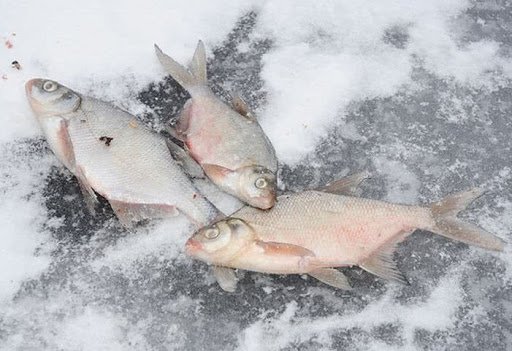
A few more features of fishing for winter bream
If the hunt is carried out on the current, it is better to use different types of jig, float heavy tackle. Work well with large, heavy baits. It is better to select them experimentally, taking into account the fishing conditions, the nature of the reservoir. A garland of devils, as well as a helicopter and a harvester, also show high results on the current. On calm waters, zonal tactics are used, thanks to which it is possible to determine promising places as accurately as possible. You can catch bream in the reservoirs in winter both with a float and with a jig. If the fish is passive, then delicate, highly sensitive baits are used. More reliable gear is suitable for large specimens.
Winter fishing for bream in a tent at night
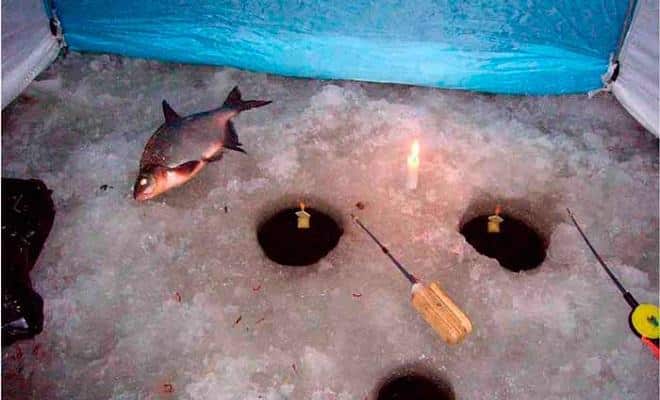
Tips from experienced anglers
A beginner can also catch winter bream from the ice. Considering some points:
- use high-quality equipment;
- use a feeder to deliver bait to the fishing point;
- darken the hole with snow, rubber, plywood;
- do not make too sharp sweeps;
- start fishing 15-20 minutes after feeding the hole.
Bream is very careful in winter, it is quite easy to scare it away. It is not worth using a cord, a thin line up to 0.16 mm thick is enough. Fluorocarbon and polypropylene monophile have proven themselves well. Going out on bream fishing is equally effective, both during the day and at night.
